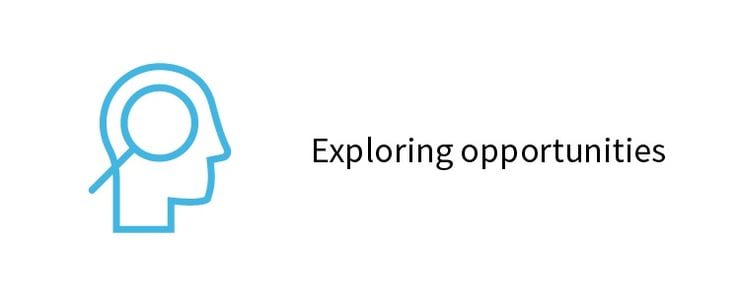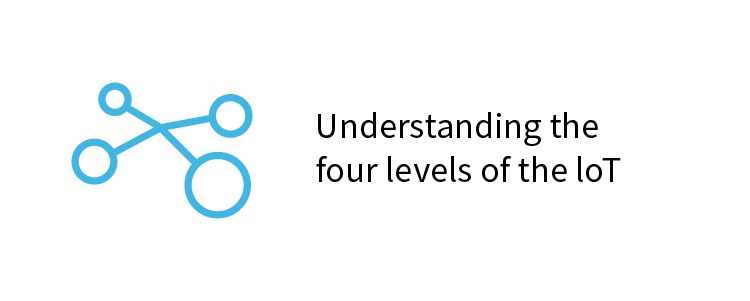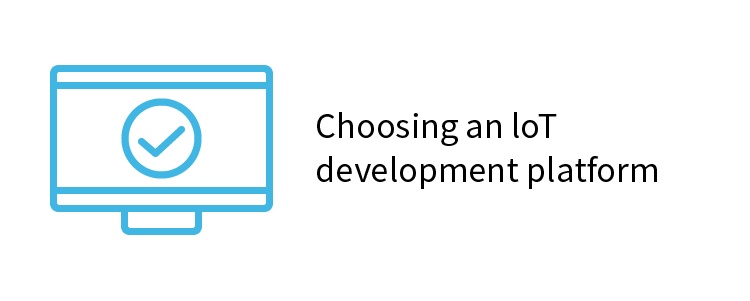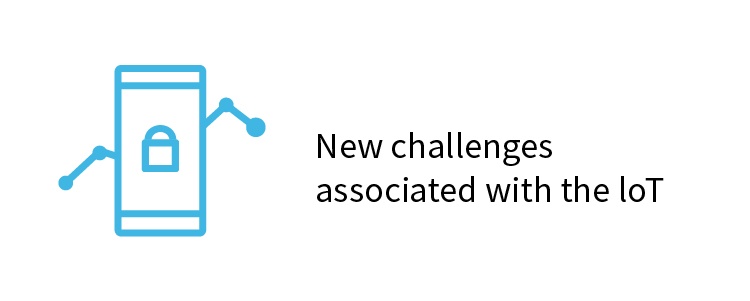Developing Apps for the Internet of Things
Experts believe that the "Internet of Things" will include 34 billion connected devices by 2020. This represents $6 trillion invested before the end of 2021, with businesses as leading adopters.

The Internet of Things, by Smart City Innovations
This disruptive technology is already transforming several industries and making its first appearances in the homes of early devotees. Here is why creating new products and apps for IoT could be a goldmine for organisations all over the world.

The IoT is both disrupting existing markets and creating new ones by increasing efficiency and reducing costs. So far, logistics and supply chain processes have successfully integrated IoT through inventory tracking or fleet and shipment management solutions. Factories have also joined the ranks of early adopters, with 26 billion connected units predicted by 2020.
Agriculture is another industry where the IoT is causing disruption as a result of smart sensors and automation. Opportunities also exist in the automotive and health care industries. Newer cars are loaded with sensors that create a safer driving experience and help manufacturers monitor performance after vehicle sale. Connected medical devices make patient care easier for those who need to track vitals to manage chronic health conditions.
The insurance sector will start to rely on the IoT to track insured assets. And we will see more retailers using connected devices to improve the in-store experience for shoppers.
These are only some of the business-related opportunities that exist for IoT app developers. There is a second market for products that will change the lives of consumers. Connected fitness devices and smart speakers are already commonplace. It is estimated that two-thirds of consumers will purchase connected tech for their homes by 2019.
These products include smart appliances, security systems, entertainment systems, and products geared toward reducing energy consumption such as smart light bulbs and connected thermostats.

Internet of things systems are implemented over four different levels. Realistically speaking, it isn't possible to create an end-to-end solution. Vendors typically focus on one or two levels and leverage existing solutions for other levels.
These are the four levels of the IoT:
- The device itself. This device collects data and is connected to the internet. A simple sensor can be enough if the purpose of the IoT solution is to monitor something, but a lot of vendors are developing specialized hardware.
- The ingestion tier. This tier includes software and the infrastructure to operate it. This is where the heavy lifting happens as data is sent from the connected device to the ingestion tier to be structured and stored. A cloud solution is typically used at this level.
- Analytics. Once the data has been processed by the ingestion tier, it can be organized and processed to generate analytics. It is interesting to note that artificial intelligence is rapidly transforming this tier.
- The end user. This is the level of the IoT that you would focus on as an app developer. The end user needs a way to interact with the IoT product and receive data, typically a mobile or a web app.
The good news is that there are plenty of solutions available for connected hardware, ingestion tier platforms, analytics, and APIs that help you communicate with these platforms.
As a developer, you will likely end up working on apps for the end user and might want to explore developing your own analytics solutions if you can't find a suitable platform for your project.

There are already several development platforms for IoT solutions, and it is likely that more players will appear on this market as the IoT keeps growing.
If you want to look into developing apps for the IoT, Ubidots is a great place to start. This app builder solution provides you with firmware libraries for a wide range of connected devices and gives you the opportunity to build your own app or create a customized dashboard.
If you want to keep coding to a minimum, Thingworx is a platform that provides you with all the building blocks you need to create an end-to-end IoT solution, including some apps that perform basic functions. Other options include Mnubo, and Bug Labs. Established vendors like Microsoft and SAP also have their own IoT solutions. IBM's Mendix platform is another exciting new product for those looking for a low-code solution.
The best ingestion tier platform depends on what kind of hardware you want to work with and how much coding you want to do. Some of these platforms provide you with APIs and a cloud-based infrastructure to process data. Others go one step further and offer more advanced app-building capabilities so you can create a customized solution with very little coding. Integration with existing business systems is another thing you might need to consider.

As a mobile app developer, you are already familiar with challenges such as usability, bugs, cross-device compatibility, and security. You will have to face these same challenges when developing apps for the IoT and some new ones as well:
- Hardware-related challenges, including interoperability, sensor accuracy, and connectivity.
- There are far more security-related challenges associated with the IoT since attacks can happen on different layers. The hardware itself is vulnerable to attacks if the firmware is outdated or the connection isn't safe, and data needs to be protected as it moves through the ingestion and analytics tiers.
- You will need to address privacy concerns, especially if you want to develop products for the home automation, entertainment, or fitness sectors.
- Scalability is going to be another challenge. Your app won't be relevant for very long if your infrastructure can't keep up with an IoT system that includes multiple devices, multiple processes, and increasing amounts of data. This is why the IoT strongly relies on cloud computing.
- Don't forget to take speed into account. Receiving data in real time is one of the main advantages of IoT systems. It is crucial to build a solution that allows data to move quickly through the different layers to deliver a good experience for the end user.
- Testing is going to get more complex as you will need to assess how your IoT app will react to a wide range of scenarios and issues coming from the different layers of the system.
Another challenge might arise in the near future as regulations are developed to address security and privacy concerns. You would need to follow strict guidelines while developing apps and might need to implement updates as these guidelines change.
In spite of all these challenges, it is possible to develop a quality product for the IoT. There are several reliable development platforms that will provide you with a performing and adaptive infrastructure. You can overcome potential obstacles by planning adequately throughout the development process.
The IoT is a real opportunity for growth, especially for businesses with the infrastructure necessary to support quality app development. It is not a stretch to imagine that the most successful products you introduce or overhaul over the next few years could be positioned for the IoT.

-2.png)